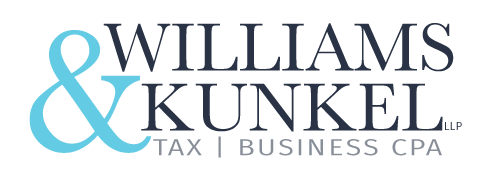Nurturing clear strategies for growth
Effective growth plans are built from a targeted strategy that builds sales and profit by channel, customer, and product to identify what can be achieved. These plans are usually more realistic and will include a new customer or new product business pipeline to define potential sources and probabilities of new growth. By building up by channel, customer, and product, the sales team can assign risk and probabilities of achieving the plan. It is then easier to measure progress at a customer level.

A trusted CPA can advise you on developing the best business growth plan.
Building the Best Growth Plan
Your growth plan needs to extend through your sales team and their planning and execution to achieve your goals. A sales team member who only focuses on order taking is not maximizing your results. Partnering marketing and sales together to discuss growth plans by customer can often yield better planning and new approaches to growing your business at the customer level.
Does your strategic plan identify your business pipeline of growth opportunities? In December, 2014, Starbucks announced a new five year growth plan. It included improving customer experiences, expanding on its acquisition of Teavana, growing its food choices to build evening business, rolling out national mobile order and pay capabilities, and developing in new markets including China, India, and Brazil. Starbucks has been highly successful in redefining and growing the coffee business. What can you learn from their new strategic growth plan?
Three key go-to-market strategies when planning for growth
- Sell more of your existing products to existing customers—by adding mobile order and pay capabilities, Starbucks makes it faster and easier to order, reducing time waiting in line as a barrier to stopping at Starbucks. The goal is to get current customers to come to Starbucks more times each week. What are you doing to get your current customers to buy from you more frequently or to buy more per order?
- Sell new products to existing customers—by adding new food products and pushing customers to enter a different day part, evenings, at Starbucks, they are leveraging new products to grow sales with existing customers. What is your plan for new products? How do they fit your strategy for current customers? Are you planning to launch close-in line extensions or more innovative new products or brands? New product plans should consider building sales with current customers first before adding new products to attract new customers. Do you have a strategic plan for new product success (idea generation, assessing potential, design, development, launch, portfolio management, etc.)?
- Sell current products to new markets—Starbucks is bringing its global brand to new markets in key growth countries where the population has growing disposable income. The core of its menu will be the products it already sells globally. It may customize a menu, to some degree, to optimize sales in international markets. As you plan for new markets, how you choose to take your brand and current products to new markets, channels, and customers will determine both your levels of risk and your probabilities of success. Detailed planning on where and how to enter new markets will help reduce risk and improve your effectiveness.
You do not need to have all three of these strategies in your growth plan like Starbucks did. Decide which of these strategies will be your primary approach to building your business.
Planning for Results
Building your financial plan from your customer and market growth strategy will help your team have greater visibility to planned growth, market opportunities, and potential risk. By planning, managing and measuring your growth initiatives, you can help improve the delivery against your goals and plans. This process takes time. Is it worth your time to build a more complete go-to-market strategy and plan? Ask yourself these key questions:
- Do you have a strategic action plan by customer to achieve this year’s goals?
- Is this plan being executed by customer, channel, and market?
- Do you know where you are falling short and why?
- Do you know your priorities for the next quarter by product and customer?
- Do you truly have high confidence you can achieve your financial goals by year-end?
If you answered no to any of these, it is likely worth investing more time in growing your business strategy and plan. For advice on learning how to grow your business, have a chat with Williams and Kunkel, CPA, LLP today at 972-446-1040.
To connect with us to receive updates throughout the business week please follow us on Twitter or LinkedIn or Like us on Facebook.
Source: Business 2 Business

